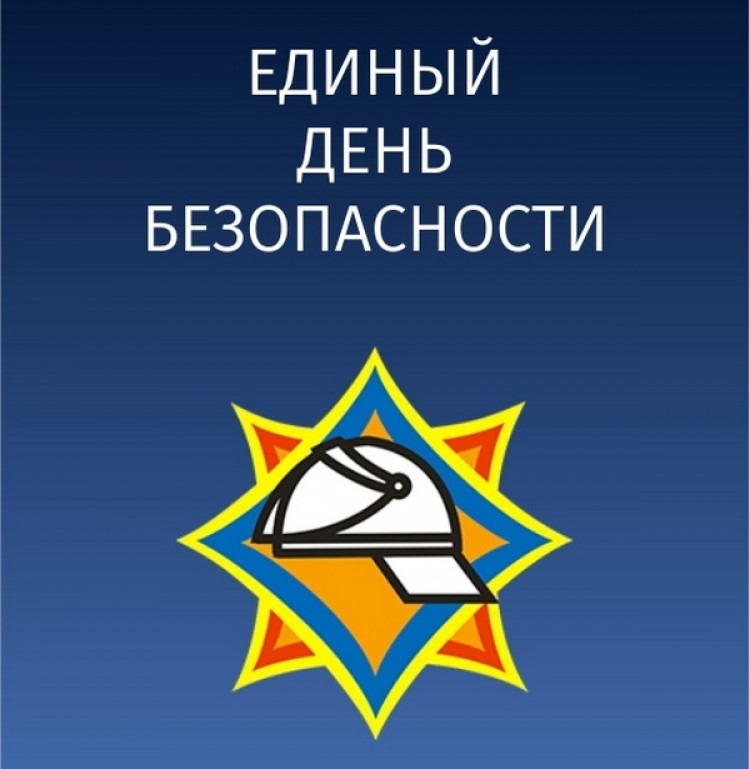Reading
I. You have to match headings or summary sentences to the parts of the text. This type of exam question tests your ability to read quickly and understand the general meaning of each part of the text.
- Read the headings or summary sentences so you know what you are looking for. Underline the key words.
- Read through the text quickly, looking for words or ideas that go with the headings or summary sentences. Underline the key words.
- Don’t read every word of the text carefully.
- Don’t panic if you see words that you don’t know. You don’t have to understand every word of the text to be able to answer the questions.
- Check your answers at the end.
II. You have to complete a gapped text. The missing extracts will be either sentences or short paragraphs. This type of question tests your ability:
- to understand the general meaning of the text.
- to understand details of the text, particularly in those parts of the text where an extract is missing.
- to understand how a text is structured.
- Read the text quickly to get the general meaning and underline the key information (people, places, times, events).
- Read the missing extracts and underline key words.
- Look carefully at the lines just before and after the gaps. Look for words and ideas that are related to the missing extracts.
- Look out for words that help to organize the text, such as pronouns, demonstratives (this, that), connecting words (however, secondly) and words of similar meaning.
- Read the completed text quickly. Does it make sense?
III. A gapped text, followed by fifteen multiple choice questions with four options. This part of the exam focuses on vocabulary and fixed phrases.
- Prepare for this part of the exam by learning:
- whole phrases rather than just individual words (on account of not account).
- words that have a similar meaning.
- phrasal verbs.
- In the exam, read the whole text quickly to get a general understanding of what it is about.
- Read the text again, this time looking at the multiple choice options and the words just before and after the gap.
- Say the sentence to yourself, trying each option in the gap. Which one sounds right?
- Check your answers by reading the completed text. Does it make sense?
IV. A text of some lines, some of which contain errors. You have to decide which lines of the text are correct, and which contain an extra and unnecessary word. This part of the exam focuses on grammar.
- Prepare for this part of the exam by correcting your own and other students’ written work.
- In the exam, read the whole text quickly to get a general understanding of what it is about.
- Read the text again line by line, looking out for extra words.
- Read the text again quickly to check your answers.
- Here are some of the most common types of extra words that you may find in the text:
- the definite or indefinite article
- prepositions after verbs, nouns and adjectives
- auxiliary or modal verbs (is, have, do, would)
- will after words such as when, if, after, unless
- pronouns (he, she, it, him, hers)
- relative pronouns (who, which, that)
- possessive adjectives (my, you, his, its)
- words such as all, whole, much, very
- conjunctions (but, or, and, so)
V.You will be given a group of texts that are on a similar topic or one text which is divided into sections. You have to match information to the correct text. This type of question tests your ability to:
- understand different types of text (reports, articles, advertisements etc).
- understand the general meaning of the text/s.
- find information in the text/s.
- Read the list of information you are looking for first. Underline key words.
- Read the text/s quickly to understand the general meaning.
- Scan the text/s for the information you want, and underline related ideas and words.
- Work-quickly – don’t get stuck on difficult words.
- Answer all the questions.
- Check your answers at the end.
VI. You have to answer four-option multiple choice questions about a text. This type of exam question tests your ability:
- to understand the general meaning of the text.
- to understand details of the text.
- to infer meaning from context. (What does the writer mean by it caused outrage in line 28?)
- to understand references in the text. (Who or what does they refer to in line 49?)
- Read the questions first and decide whether they are asking for detailed or general information. Underline key words.
- Read the text quickly to understand the general meaning. Underline key words that are connected to the questions.
- Read the text more carefully, looking at the questions at the same time.
- Begin to choose your answers. If you get stuck, eliminate those options for which there is no evidence in the text.
- Look for synonyms for words in the text in the questions.
- Don’t leave any questions unanswered. If you run out of time, guess!
- Check your answers at the end.
VII. A text with spaces. You have to complete the text by making an appropriate word from the word stem you are given. This part of the exam focuses on vocabulary.
- Prepare for the exam by learning word families and groups of words that have the same prefixes (-un, -in) or the same suffixes (-ness, -tion).
- In the exam, read the whole text quickly to get a general understanding of what it is about.
- Read the text again, this time looking at the spaces and the words just before and after them. Decide what kind of word is missing (noun, verb, adjective, adverb etc).
- Complete the spaces you are sure of first, then go back through the text and complete the remaining spaces.
- Check your answers by reading the completed text. Does it make sense?
- Check the spelling of your answers.
Use of English
I. You have to complete a sentence with a given word so that it has the same meaning as the first sentence. This part of the exam focuses on grammar and vocabulary.
- Prepare for this part of the exam by keeping a checklist of the common grammatical and vocabulary structures that appear. Here is the beginning of a check list. When you practise exercises, add to this list.
Key word transformation checklist
- verbs/phrases followed by the infinitive with or without to (had better, would rather)
- verbs followed by the infinitive or –ing form
- verbs and prepositions that go together (apologize for)
- phrasal verbs
- fixed phrases (go on holiday)
- direct speech into reported speech and vice versa
- active tenses into passive tenses and vice versa
- inversions following negative adverbials (hardly, no sooner)
- In the exam, read the first sentence and the gapped sentence.
- Focus on the key word and decide how it could be used in the sentence.
- Complete the sentences you are confident about first, then do the remaining ones.
- Don’t leave any of the questions unanswered – if in doubt, guess!
II. A text with some spaces which you have to complete with an appropriate word. This part of the exam focuses on grammar and vocabulary.
- Read the whole text quickly to understand the general meaning.
- Read the text again, this time looking at the spaces and the words just before and after them. Decide what kind of word is missing (preposition, article, pronoun, verb etc).
- Check your answers by reading the completed text. Does it make sense?
- Check the spelling of your answers.
Writing
I. You may be asked to write a short story. The story could be written for you teacher, your class or the readers of a magazine. You will be given either the title or the first or last line of the story. They key to writing a good story is to entertain the reader by making your story interesting and original.
Here are some tips on writing a story.
- Plan your story before you begin writing by deciding what the main events of the story are.
- Divide your ideas into paragraphs. You should have at least three paragraphs.
- Do not make your story too formal in style; use neutral or informal language.
- Begin your story by setting the scene. Give some details about the main characters and when and where the story takes place.
- Use a variety of past tenses.
- Use adjectives to make your story more vivid.
- Use sequencing words, eg after some time, as soon as, meanwhile.
- Use direct speech to make your story more lively.
- Make sure you bring your story to a definite end.
- Check your story for mistakes at the end.
II. You have to write a transactional letter. A transactional letter has a practical purpose (you want to get something done) and it requires a reply from the person you send it to. Here are some of the different types of letter you may have to write:
- a letter of complaint
- a letter of invitation
- a letter asking for information
- a letter describing something (eg something lost or stolen)
You will be given information with which to answer the question, such as an advertisement, notes, another letter or a picture. You may also be asked to add your own ideas. The style of the letter should be formal or semi-formal, depending on who you are writing to and why.
Here are some tips on writing a transactional letter.
- Make sure that you include all the information you are supposed to. You will lose marks if you don’t.
- Use key words from the information given. Don’t copy whole sentences.
- Think about who are writing to, and make the style of your letter appropriate. The examiners give marks for appropriacy as well as for accurate grammar and vocabulary.
- Open and close your letter appropriately. (It is not necessary to write addresses.)
- Organize the information clearly into paragraphs. Each paragraph should have a specific purpose.
- Explain in the first sentence why you are writing.
- State in the last sentence what you expect from the reader.
- Make sure you answer the question and include all the relevant information.
- Remember who you are writing the report for, and how this will affect the kind of language you use (more or less formal).
- Plan your report before you start writing.
- Use headings to make your report clearer.
- Use appropriate expressions to give examples, to generalize and to link ideas.
- In your introduction, say what the aim of the report is and where the information comes from.
- In your conclusion, summarize the main points of the report.
- Check your report for mistakes when you have finished.
IV. You may be asked to write an article for a magazine. An article is about a particular subject and is written for a general audience. It could include information, description, your opinions or arguments for and against a topic. The key to writing a good article is that it attracts the reader’s attention – you want them to read it! Here are some tips on writing an article.
- Read the question carefully. Make sure you understand what is being asked for.
- Think about who you are writing for. What age are they? What interests do they have?
- Think about who you are writing for, and how this will affect the kind of language you use.
- Think about how you can make your article interesting and different.
- Plan your article before you begin writing.
- Begin and end your article in an interesting and unusual way.
- Write in a neutral or friendly style.
- Organize your article into paragraphs, each with a clear topic.
- Use a good range of grammar and vocabulary.
- Use appropriate punctuation.
- Check your article for mistakes when you have finished.
V. You may be asked to write an opinion composition, usually for your teacher. Here are some different types of opinion composition and example questions. Advantages and disadvantages
What are the advantages and disadvantages of the increasing use of computers?
Expressing your own opinion
Exams are the best way to judge a student’s intelligence. Give your opinion.
Suggestions to solve a problem
How would you improve your city?
Discussion of different points of view on the same subject
Write a composition discussing different views on censorship of the media.
Here are some tips on writing an opinion composition.
- Read the question carefully and make sure you understand what is being asked for.
- Plan your composition before you begin writing.
- Use a formal or semi-formal style.
- Begin with a general statement of the topic.
- Organize your ideas into clear paragraphs.
- Choose one or two main points for each paragraph, and give examples or supporting arguments.
- Use linking words and expressions.
- Summarize the contents of your composition in the conclusion.
- Check your composition for mistakes in grammar, spelling and punctuation.
VI. You can choose to answer one of two questions on one of the set books. You may be asked to write about the book in a composition, a letter, a report or a magazine article. The key to writing a good book review is to summarize the book and give your opinions about it.
Here are some tips on writing a book review.
- Think about who you are writing the review for, and how this will affect the style of your language and the layout of your answer (a letter, a report, a composition).
- Plan your review before you begin writing and organize the information into appropriate paragraphs.
- Make sure you include the title of the book.
- Give some brief information about the author and when and where the book was written.
- Summarize the book, but don’t describe the whole plot.
- Name the characters you are writing about.
- Give your opinions of the book and say whether you recommend it.
VII. A good article has the following features.
- It has an interesting title.
- The first line attracts the reader’s attention.
- It is written in a style that is appropriate to the reader.
- It tries to persuade or entertain the reader.
- It is organized into paragraphs.
- It uses appropriate linking words.
- It has a range of grammar and vocabulary.
- It ends with a good conclusion that summarizes the main points.
VIII. A good story has the following features:
- an opening that captures the reader’s attention
- a clear sequence of events, making the story easy to follow
- clear paragraphing
- descriptions of people, things, feelings, places
- a variety of past tenses
- a mixture of reported and direct speech
- sequencing words
- an interesting, surprising of funny ending
IX. A good composition has the following features.
- It uses an appropriate style of language (formal or semi-formal).
- The ideas are organized in a logical way.
- It is organized into clear paragraphs.
- It has an introduction and conclusion.
- It uses a good range of grammar and vocabulary.
- It uses appropriate linking words and expressions.
X. A good report has the following features.
- It answers the question and contains all the relevant information.
- It is written in a style that is appropriate to the reader.
- It is well organized and often has headings to make the contents clearer.
- It has an introduction and a conclusion.
- It uses a good range of grammar, vocabulary and expressions.
XI. You may be asked to write a letter of complaint, for example about a holiday or something you have bought that is faulty. You will be given information to use, such as an advertisement or a picture. Here are some tips on writing a letter of complaint.
- Make sure you include all the relevant information.
- Write your letter in a formal style.
- State your reason for writing in the first sentence.
- Organize your complaints into paragraphs.
- End your letter with a request for action or a recommendation on how the reader can improve the service or product.
XII. You may be asked to write an informal letter to someone you know, for example a friend, a pen friend or a relative. The general reason for writing will be to interest your reader. The letter could also share an experience, explain feelings or opinions or give information. The key to writing an informal letter is to make the contents of the letter interesting.
Here are some tips on writing an informal letter.
- Plan what you want to say and organize your ideas into paragraphs.
- Ask yourself, ‘Will this be interesting to read?’
- Use an informal and friendly style of language, eg use contractions, short, everyday words, phrasal verbs and idioms.
- Write short, simple sentences.
- Address the reader directly using you.
- Open and close the letter appropriately.
XIII. You may be asked to write a letter describing something. The letter could describe an object, a place or an event. It could be written to someone you know, for example a friend, or to someone you don’t know, for example a hotel. The letter could be transactional (you expect a reply, for example if you have lost something), or non-transactional (for example if you write to a friend telling them about something). Here are some example situations you could be asked to write about:
- You have left your ring in a hotel room and you write to the hotel to ask whether they have found it.
- You have been given a kitten for your birthday and write a letter to a friend describing it.
- Your pen friend has written to you asking you to describe your home town.
- You have recently been to your sister’s wedding and write a letter to a friend describing it.
Here are some tips on writing a describing letter.
- Think about who you are writing to, and how this will affect the style of your language (formal or informal).
- Begin by giving the reason for writing.
- Organize your ideas into paragraphs.
- End your letter by making a request (if you want something done), or comment on the contents of your letter (if you are telling your reader about something).
Speaking
I.
- As you enter the exam room, greet the examiners.
- Be prepared to give your name to the examiner.
- Listen carefully to the examiner’s questions and answer them as fully as you can.
- Look at the examiner when you are speaking. (Don’t look at the floor or up at the ceiling!)
- Speak clearly so that both examiners can hear you.
- Try to be calm and cheerful.
II. You have to compare and contrast two photographs. The examiner will also ask you an opinion question about them. You have to speak for about one minute. The other student will be asked by the examiner to comment on your photographs after you have finished.
- Listen carefully as the examiner explains what the subject of the photographs is.
- Describe the photographs by comparing them with each other.
- Don’t describe everything in the photographs in great detail – the aim is to give a general description and comparison.
- Keep talking until the examiner interrupts you. The examiners can only grade you on what they hear, so show them what you know.
- Don’t worry too much about using accurate language. The examiners give marks for fluency as well as for grammar, vocabulary and pronunciation.
- Don’t panic if you don’t know the English word for something in the photographs. Try to explain what it is as well as you can.
- to solve a problem.
- to make a plan for something.
- to put a list of things into some sort of order (eg what you like best/least, what you think is the most/least important).
Sometimes the examiner will ask you to try to agree on a decision with the other student and sometimes he/she will just ask you to discuss and express your opinions.
The examiner will ask both of you general opinion questions about the topic of the task.
- Listen carefully to what the examiner tells you to do.
- Don’t panic if you don’t understand what to do. Ask the examiner to repeat his/her instructions.
- Talk to your partner, not the examiner.
- Don’t ‘switch off’ when your partner is talking – listen to what he/she is saying.
- Share the talking with your partner. If you dominate the discussion or if you say very little, you will lose marks.
- Keep to the topic of the task – don’t start talking about something else.
- Try to sound interested in the task and the discussion.
- Don’t panic if you think you’re not going to finish the task. You will not lose marks if you don’t reach a decision with your partner.
IV. In the exam you may want to talk about something you don’t know or have forgotten the English word for, such as an object in one of the photographs.
- First of all, don’t panic! Vocabulary is only one of the things the examiners give you marks for and you won’t fail the exam if you don’t know a few words.
- Ask the examiner for the word, or try to describe and explain what the object is. Here are some questions and expressions you can use.
It is all right if I ask you for a word?
Could you tell me what the word for this is in English?
What is this called in English?
I’m sorry, I don’t know what we call this in English.
I can’t remember the word for this thing on the left/right.
It’s a sort of/kind of … (tool, musical instrument)
It’s something we use for … (mending the car)
It’s one of those things we use when we … (go on holiday, have a baby)
It’s something we use in … (the house)
You find things like this in … (an office)
It looks (a bit) like … (a spoon)
Listening
I. You will listen to short extracts. The extracts will be taken from different contexts and may be either monologues or dialogues. You have to answer a three-part multiple choice question on each extracts. The questions may ask you to decide:
- who is speaking.
- where the extract takes place.
- what the speaker or speakers are talking about.
- what emotion, attitude or opinion is being expressed.
- Prepare for the exam by listening to English whenever you can. For example, listen to pop songs, the BBC World Service and watch English programmes on TV.
- Underline key words when you listen for the first time, and make your choice.
- Check your answers when you listen for the second time.
- Don’t leave any questions unanswered – if in doubt, guess!
II. You will hear some short extracts which are related in some way and may be either monologues or dialogues. You have to match information to each extract.
- Read the information first and try to predict what the extracts will be about.
- When you listen for the first time, underline key words and answer any of the questions you can.
- When you listen for the second time, answer the remaining questions.
- Check your answers.
III. You will hear a monologue or dialogue lasting about three minutes. You may be asked the following types of question:
- True/False questions
- three-part multiple choice
- Yes/No questions
- which speaker said what
- Look at the questions so you know which type is being used.
- Try to predict from the questions what you will hear, eg: Who are the speakers? Where are they? What is their relationship? What are they doing/talking about?
- When you listen for the first time, try to understand the general meaning and answer any questions you are confident about.
- When you listen for the second time, underline key words and answer the remaining questions.
- Check your answers at the end.
IV. You will listen to a monologue or dialogue lasting about three minutes. You have to complete notes or sentences using between one and three words. This type of question tests your ability to understand the general meaning or gist, the main points and the details.
- Read the sentences or notes you have to complete. What kinds of words are needed?
- When you listen for the first time, complete the sentences and notes you feel confident about.
- When you listen for the second time, focus on the remaining sentences and notes.
- Don’t worry about spelling. You will not lose marks if you spell a word incorrectly.



















